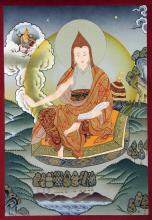Explore Yogācāra Buddhism

The Yogācāra (practitioners of yoga) school, also known as citta-mātra (mind-only), or vijñānavāda (consciousness school), is one of two major schools of Indian Mahāyāna Buddhist thought, which flourished in classical India from the 3rd–4th century CE to the 9th century CE.
- William Waldron, Yogācāra in Oxford Bibliographies.
Sources in this collection
The list below includes sources from this Collection’s Subcollections.
Displaying 1 - 40 of 40
Owner
Than GroveAccessibility
This collection is Public - accessible to all site users
Subcollections
This collection has no subcollections.